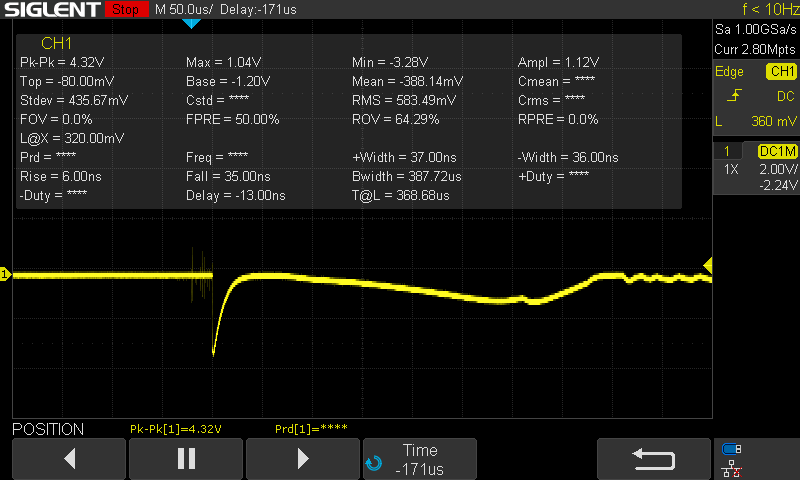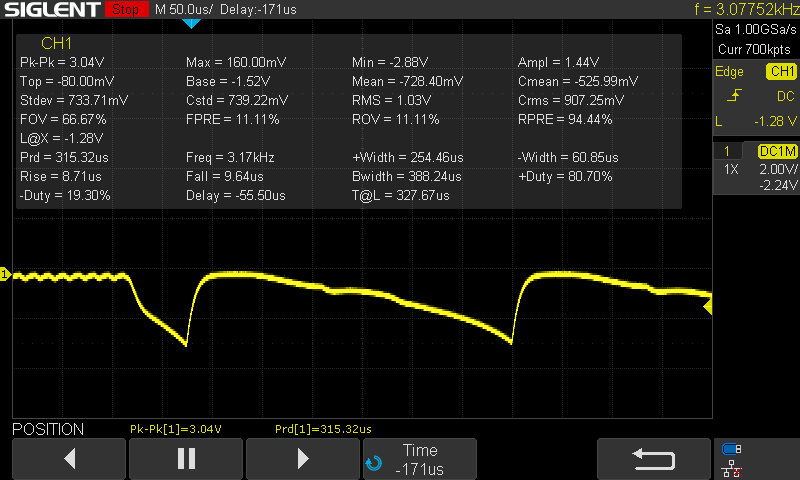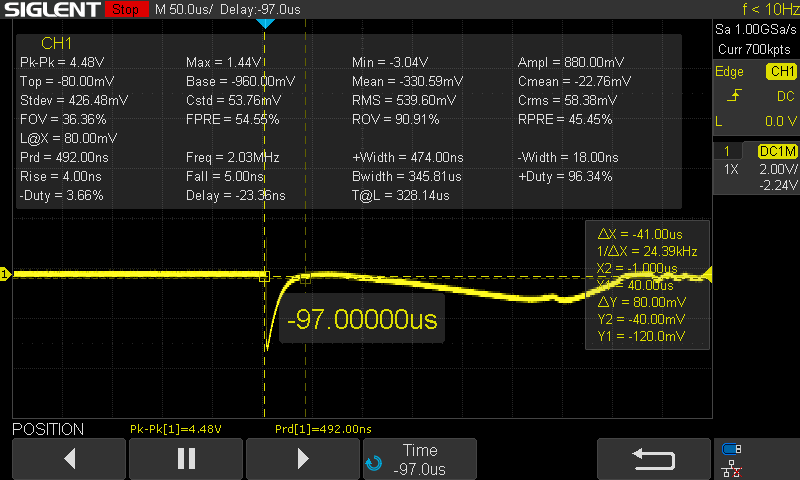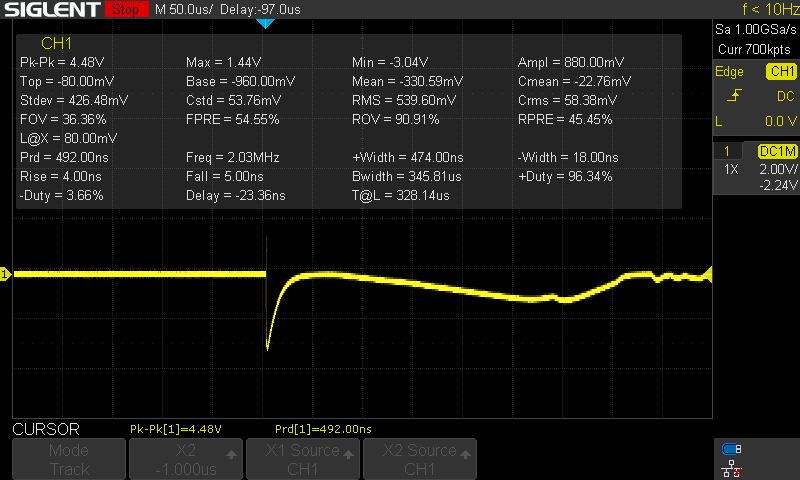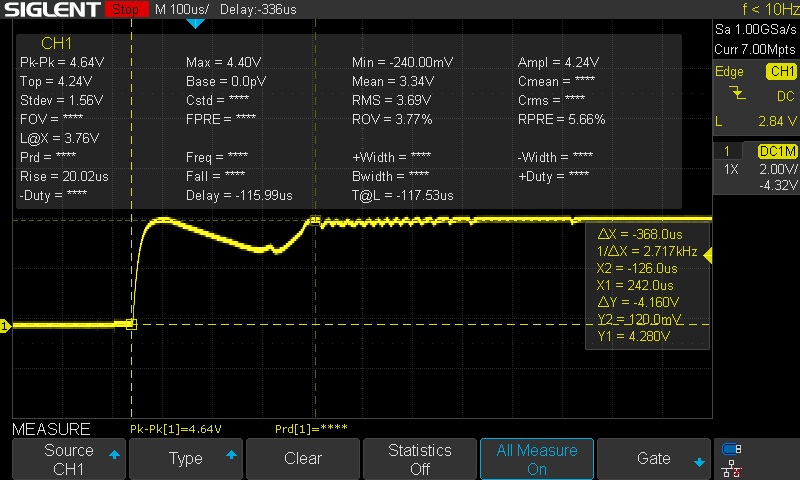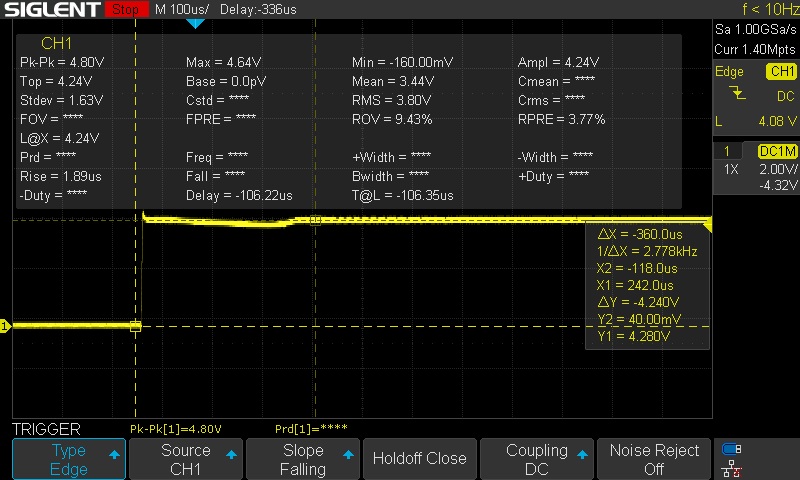Other Parts Discussed in Thread: LMC555,
Hello, quick question.
I am in the process of implementing a single cell lipo (LiHV 3.8v) cell protection, mainly from undervoltage.
I am using a cricut design generated from webench which works well for my application (3.8v to 5v 2.5A).
While trying to implement a protection circuit, I ran into a problem with inrush current at startup. It probably pulls about 8 or so amps on start up very briefly which the lipo can accept but any lipo protection circuit kicks in. So my first battle is solve the issue of the large inrush. See boost design below.
My OC protection would be probably around 3 amps or so. Is that possible to obtain on startup ?
The coil is a 994-XAL7030-102MEC.
Note from the screen shot there are actually 2 10uf input caps and 3 22uf output caps use in my design form previous generated design.
Second lesser question, is there an alternative single cell protection chip without the need to pulling up the output when a new battery is plugged into the input? without charger, and/or is there another enable the output? I was thinking of a lmc555 timer in a one shot, but that looks to have issues of its own, as its cmos logic.
I might end up using a dw01b or similar chip which seems to work without needing to pull up the output fet.



